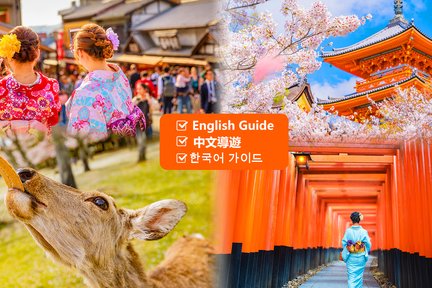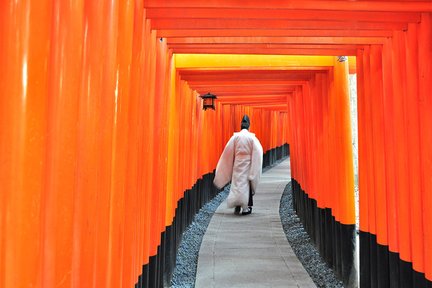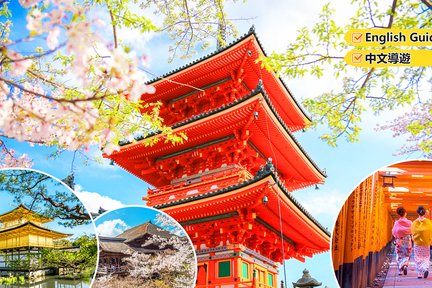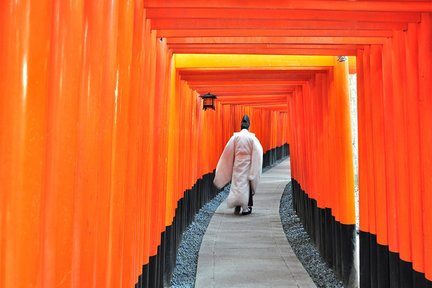Fushimi-Inari Taisha
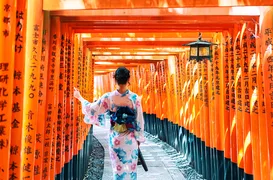
The best of Fushimi-Inari Taisha
Bucket-list experiences
Make it a getaway
Trouble-free transport
All that's good & tasty
More to explore
Why people love Fushimi-Inari Taisha
Nearby places to go
FAQs about Fushimi-Inari Taisha
Why is Fushimi Inari Taisha famous?
Is the Fushimi Inari shrine worth it?
What do people do at Fushimi Inari Taisha?
How many stairs are there at Fushimi Inari?
What to know before visiting Fushimi-Inari Taisha
What to know before visiting Fushimi-Inari Taisha
Must-Visit Attractions in Fushimi-Inari Taisha
1. Fushimi Inari Taisha
Go on a 3.5-kilometer hike surrounded by 10,000 vibrant orange gates, creating a truly magical and unparalleled journey. As you make your way to the mountain peak, you'll encounter miniature shrines and peaceful hideaways, providing a tranquil escape from the bustling crowds.
2. Senbon Torii Gates
Take a walk through the iconic Senbon Torii Gates, a trail lined with thousands of donated gates inscribed with names, leading to the serene forest of Mount Inari. Each gate, donated by individuals and companies, displays the donor's name and donation date. Prices range from 400,000 yen for smaller gates to over one million yen for larger gates.
3. Main Hall and Romon Gate
You can stop by the grand Romon Gate at the shrine's entrance and show your respects through a small offering at the main hall (honden) where the respected deity is enshrined.
4. Yotsutsuji Intersection
After a 30-45 minute climb, the number of torii gates gradually decreases, and you will arrive at the Yotsutsuji intersection, approximately halfway up the mountain. Here, you can appreciate lovely views of Kyoto and choose between continuing on a circular route to the summit. Many hikers opt to turn back at this point since the trail offers limited variation beyond this intersection and there are fewer gates along the trail.
5. Fox statues
Foxes are commonly seen as the messengers of the Inari deity, with fox statues scattered throughout the shrine. According to Japanese lore, these foxes love to eat aburaage, a type of deep-fried tofu. Along the shrine's path, you can find tea stalls offering tasty inari sushi (rice-filled aburaage pockets) and kitsune udon (noodle soup with aburaage), both serving as delightful and satisfying light meal options.
6. Fushimi-Inari Taisha Restaurants
As you stroll towards the shrine, you'll find Japanese restaurants and souvenir shops lining the way. Keep an eye out for sweet shops offering tsujiura senbei, a fortune cookie variety thought to have originated in the 19th century. Interestingly, some assume that these treats could be the predecessors to the famous Chinese-American fortune cookie we know today.
Tips for Your Fushimi-Inari Taisha Visit
When is the best time to visit Fushimi-Inari Taisha?
It's best to visit Fushimi Inari Taisha early in the morning to avoid crowds or in the evening for a serene experience. Plan your trip to make the most of your time at this iconic site.
How to go to Fushimi-Inari Taisha?
Located in southern Kyoto city, Fushimi Inari Taisha is easily accessed from Kyoto Station. You can take the JR Nara Line to Inari Station. The shrine is located opposite the Inari Station. Alternatively, take the Keihan Line to Fushimi Inari Station. It's about a 7-minute walk from there.
How long does it take to walk up Fushimi Inari?
The hike to the summit of the mountain and back takes about 2-3 hours, though you are free to walk just as far as you wish before turning back.
